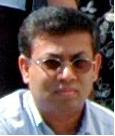Friday, August 08, 2008
Tuesday, August 05, 2008
Birds Nest - Review - New York Times
 Architecture Review
Architecture ReviewOlympic Stadium With a Design to Remember
Given the astounding expectations piled upon the National Stadium, I’m surprised it hasn’t collapsed under the strain.
More than 90,000 spectators will stream through its gates on Friday for the opening ceremony of the Olympic Games; billions are expected to watch the fireworks on television. At the center of it all is this dazzling stadium, which is said to embody everything from China’s muscle-flexing nationalism to a newfound cultural sophistication.
Expect to be overwhelmed. Designed by the Swiss architects Jacques Herzog and Pierre de Meuron, the stadium lives up to its aspiration as a global landmark. Its elliptical latticework shell, which has earned it the nickname the Bird’s Nest, has an intoxicating beauty that lingers in the imagination. Its allure is only likely to deepen once the enormous crowds disperse and the Olympic Games fade into memory.
The Beijing National Stadium (simplified Chinese: 北京国家体育场; traditional Chinese: 北京國家體育場; pinyin: Běijīng Guójiā Tǐyùchǎng), also known as the National Stadium (国家体育场),[1] or colloquially as the "Bird's Nest" (鸟巢) for its architecture, is a stadium in the Olympic Green in Beijing, China that was completed in March 2008.[2] The stadium is hosting the main track and field competitions for the 2008 Summer Olympics, as well as the opening and closing ceremonies. It is located east of the Beijing National Aquatics Center. The Stadium now holds the Olympic Flame cauldron, which is shaped as a conical scroll. The cauldron was placed on the top during the opening ceremony, so that it could then be lit at the end of the ceremony. The flame will now burn there until the end of the 2008 games.read more in Wikipedia



